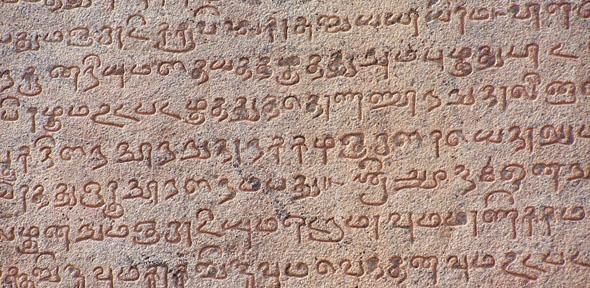
Back in the 1990s, the football manager Dennis Wise was unfazed that some of his new players were foreigners. They would soon be able to communicate, he reassured everyone, since he intended to “learn them a bit of English”.
Earlier this year, David Cameron had the same bright idea. Writing in The Times in January, the prime minister lamented that 22% of British Muslim women speak “little or no English”. He argued that it was prohibiting their social integration and holding them back economically. These problems would be solved, he suggested, if these women acquired fluency in English.
The very fact that this fatuous idea can be solemnly propounded by prominent politicians reveals the extent to which linguistic diversity has become a conundrum in our vast, sprawling, multi-ethnic, multi-lingual, multi-cultural, post-industrial societies.
The ongoing migration crisis is unparalleled in living memory, and it painfully illustrates how large-scale population displacements can rapidly create social situations in which linguistic differences become flashpoints. The inability of migrants to speak the first language of a country to which they have travelled can arouse suspicion and alienation. These differences create divisions that can only be bridged by translating from one language to another, and from one culture to another.
Oddly, we hear little in the media about how translation operates in societies where there are class-based divisions or displaced communities. Some recent research has explored the role of translation in war zones, but this has mainly emphasised the rhetoric of the political elite, rather than the day-to-day linguistic difficulties encountered by civilians caught up in the conflict.
This is disturbing since the power imbalances in any society are manifest in its languages. For instance, Lin Kenan has written at length about how translation could potentially help to trigger social change in China.
Social justice
In this age of relentless globalisation, certain groups of people are routinely disenfranchised due to gender, ethnicity, nationality and social class. In this context, it’s helpful to consider the role translation plays in all of this, and whether it can ever help to empower the disenfranchised – or only serve to increase their vulnerability.
The controversial translation theorist Lawrence Venuti has argued insistently that fluent translations frequently perpetuate socio-political inequalities. In his view, translation is not an innocuous activity that facilitates communication – it can entrench inequality by bolstering the supremacy of dominant cultures.
Recent research has started to explore these complex issues. The translation scholar Israel Hephzibah focuses on English translations of Tamil literature produced by members of the so-called “untouchable” Dalit communities in India. These translations inevitably destabilise the traditional caste system by conferring literary credibility on the writings of a severely marginalised group. Such cases suggest that translation can become aligned with social justice.
Becoming extinct
But the fraught issue of endangered languages and cultures complicates the picture. UNESCO has estimated that 50-90% of the world’s languages will have become extinct by the year 2100.
It has been recognised for some time now that translations of indigenous texts (whether oral or written) can hasten language erosion in communities where there are few surviving native speakers. In contrast, translations into the endangered tongues can help to strengthen those languages.
On the whole, we seem to care less about vanishing languages than we do about endangered species – especially cuddly ones. When the last giant panda finally goes to the great bamboo grove in the sky, there will undoubtedly be prolonged global lamentation. But the Native American Klallam language expired on February 4 2014, when Hazel Sampson (its last speaker) died. Few news organisations felt its passing merited more than a cursory mention.
And even some translation theorists are sceptical. Emily Apter declared bluntly that she has “real reservations” about mingling translation studies and linguistic ecology – the study of how languages interact with their environment. Apter is concerned that the exoticising of expressions by native-speakers and other distinctive characteristics of a language risks imposing a fixed grammar where a natural variation should instead be allowed to prevail.
There are many different kinds of periphery in the modern world, and life close to them can be difficult, even precarious. But languages are spoken there too. They may not be the same languages as those uttered closer to the “centre” of things, but that does not invalidate them.
If we can understand more fully how translation both strengthens and weakens these often disregarded tongues and cultures, then we might be forced to reconsider some of our rather simplistic presuppositions about language and society. And, fortunately, if all else fails, we can always make the world a better place by “learning” everyone a bit of English.
Marcus Tomalin, Research Associate in the Machine Intelligence Laboratory, Department of Engineering, University of Cambridge
This article was originally published on The Conversation. Read the original article.
The opinions expressed in this article are those of the individual author(s) and do not represent the views of the University of Cambridge.
Marcus Tomalin (Department of Engineering) discusses the role of translation in social inequality and social justice.

The text in this work is licensed under a Creative Commons Attribution 4.0 International License. For image use please see separate credits above.